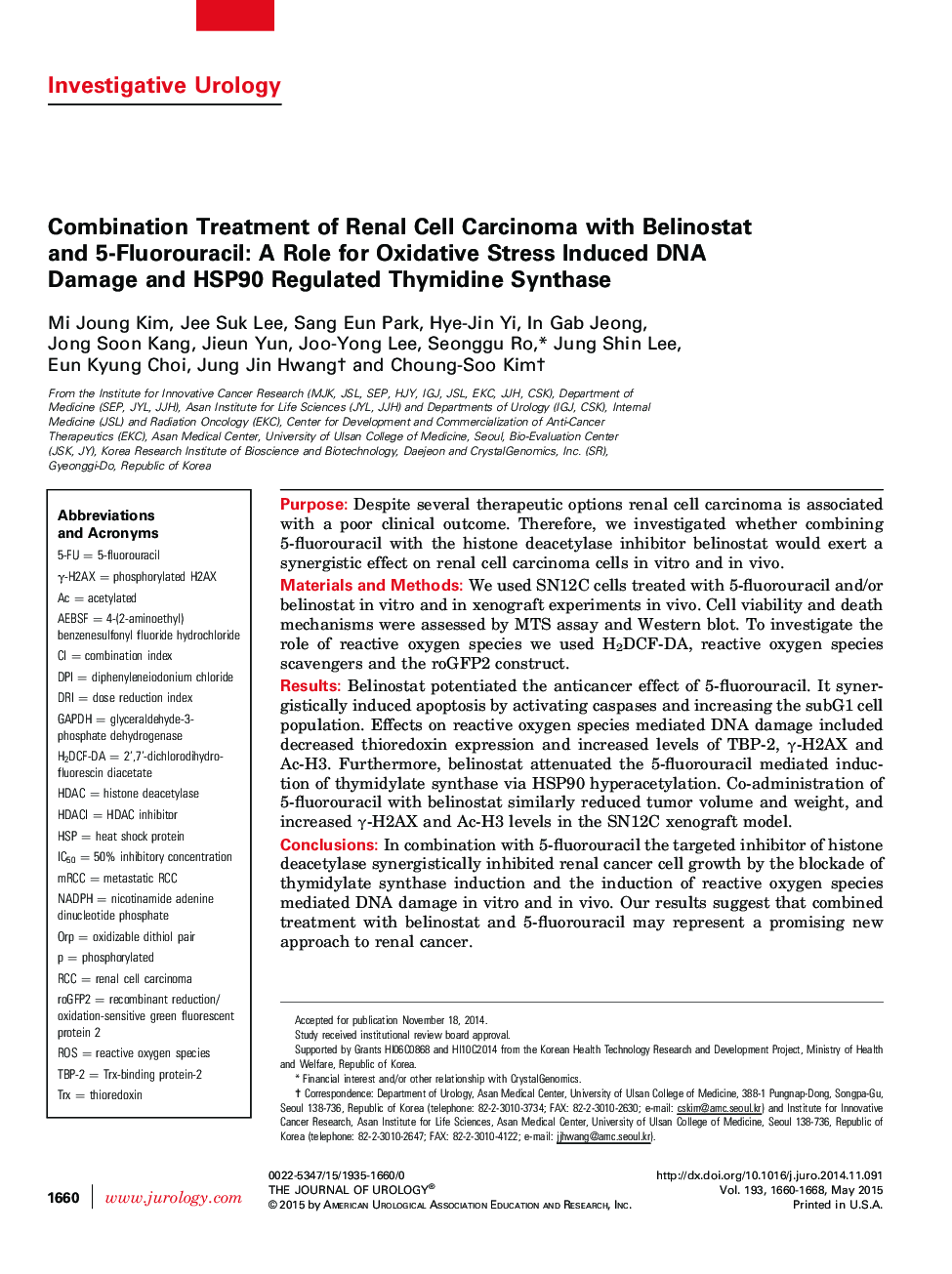| Article ID | Journal | Published Year | Pages | File Type |
|---|---|---|---|---|
| 3858717 | The Journal of Urology | 2015 | 9 Pages |
PurposeDespite several therapeutic options renal cell carcinoma is associated with a poor clinical outcome. Therefore, we investigated whether combining 5-fluorouracil with the histone deacetylase inhibitor belinostat would exert a synergistic effect on renal cell carcinoma cells in vitro and in vivo.Materials and MethodsWe used SN12C cells treated with 5-fluorouracil and/or belinostat in vitro and in xenograft experiments in vivo. Cell viability and death mechanisms were assessed by MTS assay and Western blot. To investigate the role of reactive oxygen species we used H2DCF-DA, reactive oxygen species scavengers and the roGFP2 construct.ResultsBelinostat potentiated the anticancer effect of 5-fluorouracil. It synergistically induced apoptosis by activating caspases and increasing the subG1 cell population. Effects on reactive oxygen species mediated DNA damage included decreased thioredoxin expression and increased levels of TBP-2, γ-H2AX and Ac-H3. Furthermore, belinostat attenuated the 5-fluorouracil mediated induction of thymidylate synthase via HSP90 hyperacetylation. Co-administration of 5-fluorouracil with belinostat similarly reduced tumor volume and weight, and increased γ-H2AX and Ac-H3 levels in the SN12C xenograft model.ConclusionsIn combination with 5-fluorouracil the targeted inhibitor of histone deacetylase synergistically inhibited renal cancer cell growth by the blockade of thymidylate synthase induction and the induction of reactive oxygen species mediated DNA damage in vitro and in vivo. Our results suggest that combined treatment with belinostat and 5-fluorouracil may represent a promising new approach to renal cancer.
